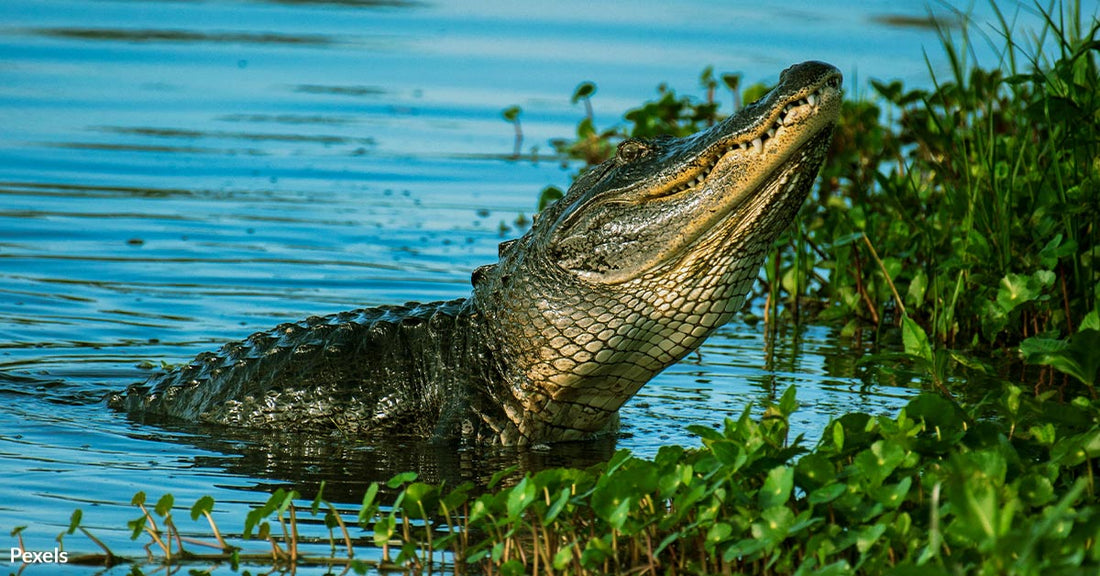Animals Forced into Human Areas as Helene Ravages Southeastern Ecosystems
Matthew Russell
Hurricane Helene’s violent arrival in the Southeastern United States has not only devastated human communities but also caused widespread disruption to the region’s wildlife. As communities work to recover, experts are already raising alarms about the storm’s impact on ecosystems and animal populations across Florida, Georgia, and North Carolina.
From flooded habitats to displaced animals, the full extent of the damage remains unknown, but early reports reveal a grim situation for both terrestrial and marine life.
 \
\
Floodwaters Force Wildlife Closer to Human Populations
In Florida, rising floodwaters are pushing animals like alligators into populated areas. The Florida Fish and Wildlife Conservation Commission (FWC) warns that alligators may be found in unusual places after a storm as they navigate swollen rivers and flooded wetlands. The commission advises residents to give wildlife space and avoid attempts to rescue stranded animals, which could be dangerous for both people and animals. Other species, such as bears and gopher tortoises, are also displaced due to habitat destruction, according to the FWC. They often find themselves in environments closer to humans, increasing the risk of conflict, the FWC reports.
Helene’s torrential rains have also affected birds, with flooding forcing burrowing owls to seek refuge in unexpected locations, USA Today reports. After Hurricane Idalia, flamingos were swept far from their native habitats, ending up as far north as Missouri and Wisconsin. Similar wildlife displacement is expected in the aftermath of Hurricane Helene.

Marine Life Battling Turbulent Waters
Marine species face unique challenges in the wake of Helene. While larger animals like whales and sharks are able to swim to calmer waters when they sense a storm coming, slower-moving animals such as manatees are at higher risk, USA Today reports. During previous storms like Hurricane Irma, manatees were found stranded in shallow waters, and similar incidents are anticipated with Helene. The FWC urges residents to avoid approaching stranded marine animals and to contact wildlife authorities instead.
Sea turtles are also at risk, especially since their nesting season overlaps with Florida’s hurricane season. Hurricanes like Helene bring higher tides that can flood turtle nests or erode beaches, putting turtle eggs at risk. However, the FWC points out that many sea turtles lay multiple nests throughout the season to ensure at least some survive, the FWC reports. Hatchlings, meanwhile, may become tangled in debris or stranded onshore, leading to further threats.
Forest Loss and Habitat Destruction
Helene has also inflicted heavy damage on forest ecosystems, with widespread tree loss and habitat destruction affecting countless species. Gopher tortoises, which depend on undisturbed environments for their burrows, face severe challenges as their habitats are destroyed by storm debris. According to the FWC, species like screech owls may benefit from the increased availability of downed wood for shelter, but other animals will likely struggle to recover.
Freshwater ecosystems are also feeling the impact. Flooding and storm runoff can significantly alter water salinity levels, which disrupts aquatic life and can lead to long-term damage. The FWC warns that the impact on species such as fish and seagrass may not be fully understood for months, as the immediate focus remains on rescue efforts and recovery, reports CBS12.

Invasive Species and Captive Wildlife Concerns
Another significant concern in Helene’s aftermath is the spread of invasive species. Hurricanes often enable the spread of non-native plants and animals, including fire ants and invasive fish species, which thrive in disturbed environments. Additionally, captive wildlife facilities are at risk during hurricanes. After Hurricane Andrew in 1992, many exotic species escaped captivity, leading to significant ecological challenges. The FWC has strict disaster plans in place for captive wildlife facilities to minimize the risk of escape, but the potential for invasive species to spread remains a serious threat Florida Fish and Wildlife reports.

The Road to Recovery
The full extent of Hurricane Helene’s impact on wildlife is still being assessed, but it’s clear that the storm has caused significant disruption across the region. Conservation groups and wildlife agencies are mobilizing to assist with recovery efforts, focusing on both rescuing displaced animals and rehabilitating damaged habitats. Experts are urging residents to remain vigilant, as animals may continue to appear in unusual places in the weeks following the storm.
Restoring the affected ecosystems will take time. In the meantime, wildlife officials are asking the public to report sightings of injured or stranded animals and to avoid handling them without professional assistance. The path to recovery will be long, but with continued support from conservation efforts, Florida’s wildlife can begin to rebuild.
We need your support to help people and pets impacted by this devastating hurricane. Donate now!

